By Anne Swardson
A few days ago, Le Canard Enchainé, an investigative newspaper, revealed what it said was a deliberate government plan to enforce the coronavirus lockdown only lightly in low-income suburban areas. Crime is generally higher there; the Interior Ministry’s thinking allegedly went that making scofflaws obey would come at an unacceptably high cost of potential violence against cops and more infections for everyone.
Was the government really abandoning these neighborhoods to the coronavirus? I couldn’t find a direct response. But Interior Minister Christophe Castaner regularly says his job is to make sure the rules are followed as widely as possible. And he repeats the tally of how many people have been checked by police for compliance and how many fines have been issued – 5.8 million and 359,000 respectively, as of a few days ago.
France has done a pretty poor job over the last few decades of dealing with its poor and marginalized populations, many of them of North African and African background. The coronavirus crisis is showing no sign of being an exception. In the suburbs that ring Paris, and in some parts of the city itself, residents often don’t have enough faith in the government to believe the new rules will make a difference. And they hit harder on lower-income people, those with small, cramped apartments.
“When you have three or four teenagers at home, it’s hard to keep them shut up all day.”
Mohamed, a 40-year-old man speaking to Agence France Presse
The police, for their part, get hassled at times in these neighborhoods. A policewoman was critically injured last week when she was hit in the head with a brick while trying to break up a group of people in a quartier difficile in Beauvais, north of Paris. Le Point magazine reported last week on how hard it was for the cops to enforce the lockdown in a couple of neighborhoods in Paris.
I knew one of those neighborhoods and had been there many times. Called the Goutte d’Or (Drop of Gold), it is home to people of a dizzying variety of races, religions, dress, habits and attitudes. Many years ago, my son’s youth baseball team practiced in winter at the city gym there (yes, baseball). Fox News had labeled it one of France’s “no-go zones” after the terrorist attacks of 2015 – to a fair amount of local hilarity. In the years after, I often took American visitors there to show them what a vibrant ethnic neighborhood looked like. The worst thing that ever happened was when I was scolded by a fruit vendor for not saying “Bonjour” before I asked the price of his kumquats.
This is what it looked like before the lockdown. I got chicken drumsticks on the Dejean market street for a very cheap price that day.

I decided to make a visit. Armed with a mask, gloves, two different attestations (more on that later) and a press pass for an organization I no longer worked for, I set out. I hadn’t left my own neighborhood in 14 days, since the lockdown began.
I took the tramway, which now encircles much of Paris, from a stop near my house. Those waiting seemed to observe social distancing, and those inside were protecting themselves.
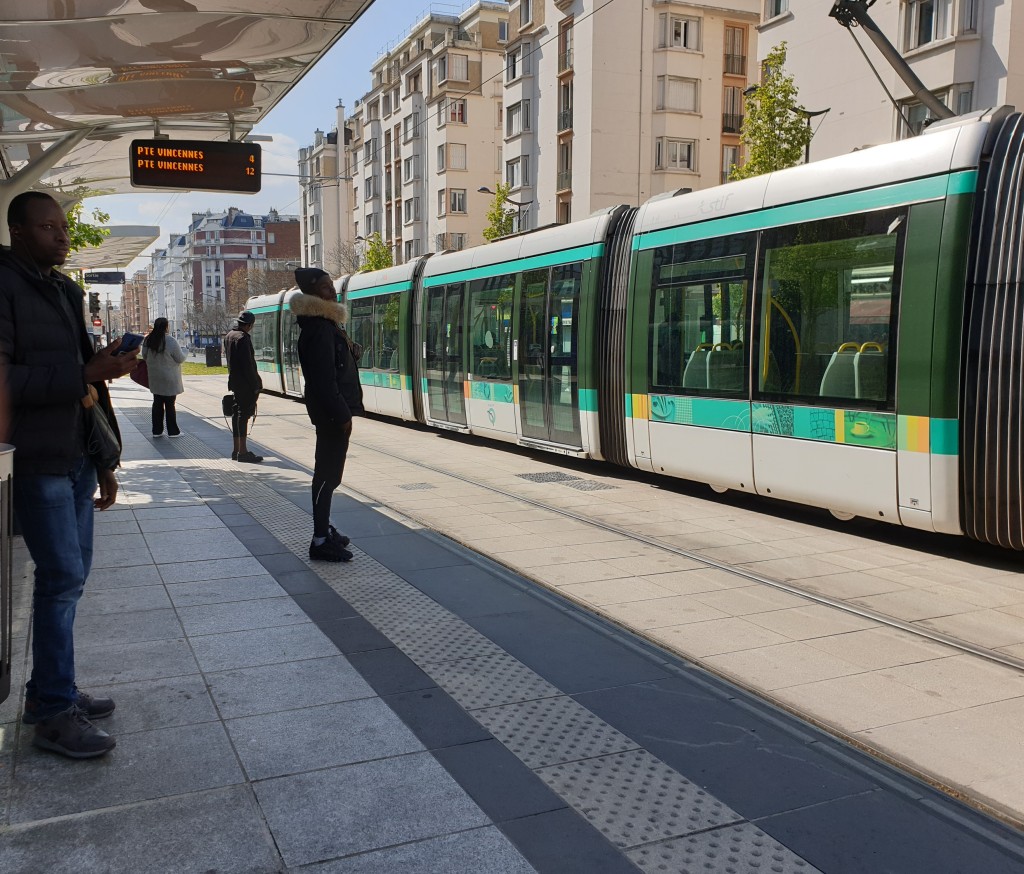

There were a few bicycle cops when I got out at the Porte de Clignancourt, but none seemed to be worried about anyone’s papers.
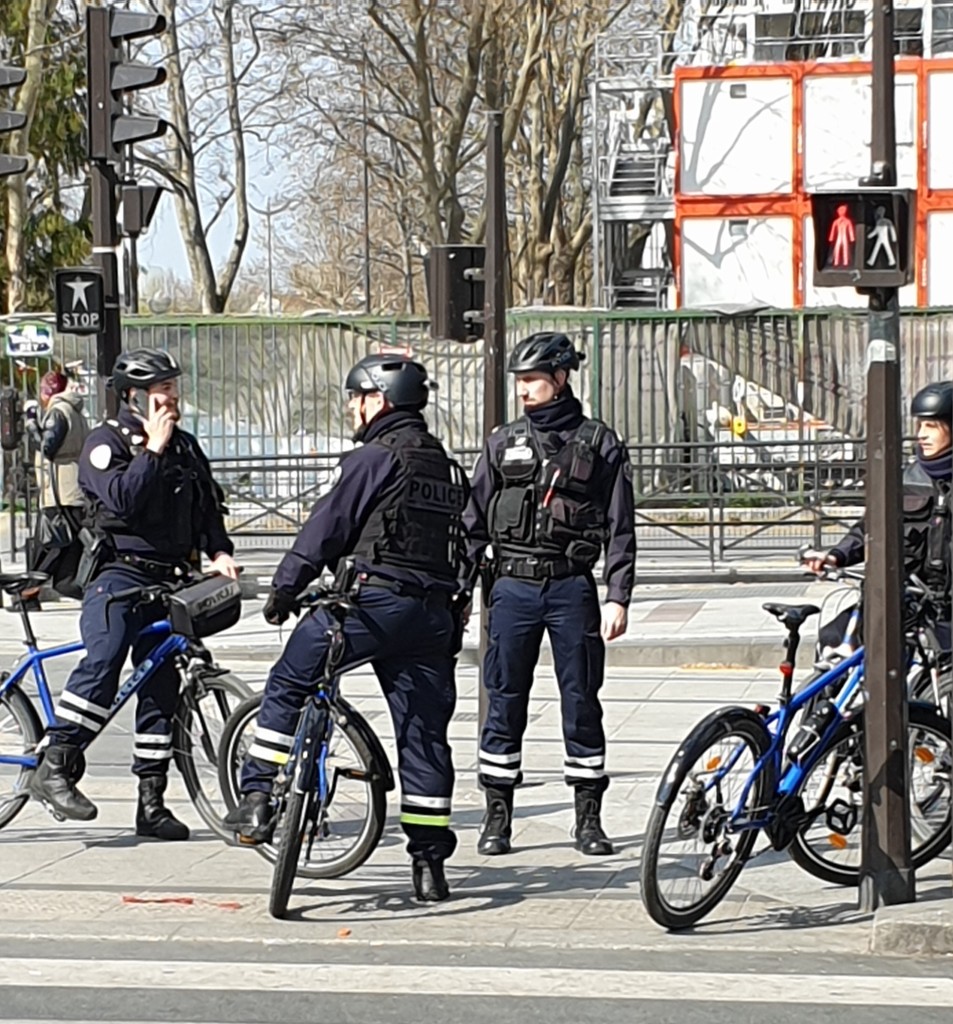
Mostly what I saw walking south on the boulevard Barbès was people standing in line in front of grocery stores. Long lines, well-spaced.
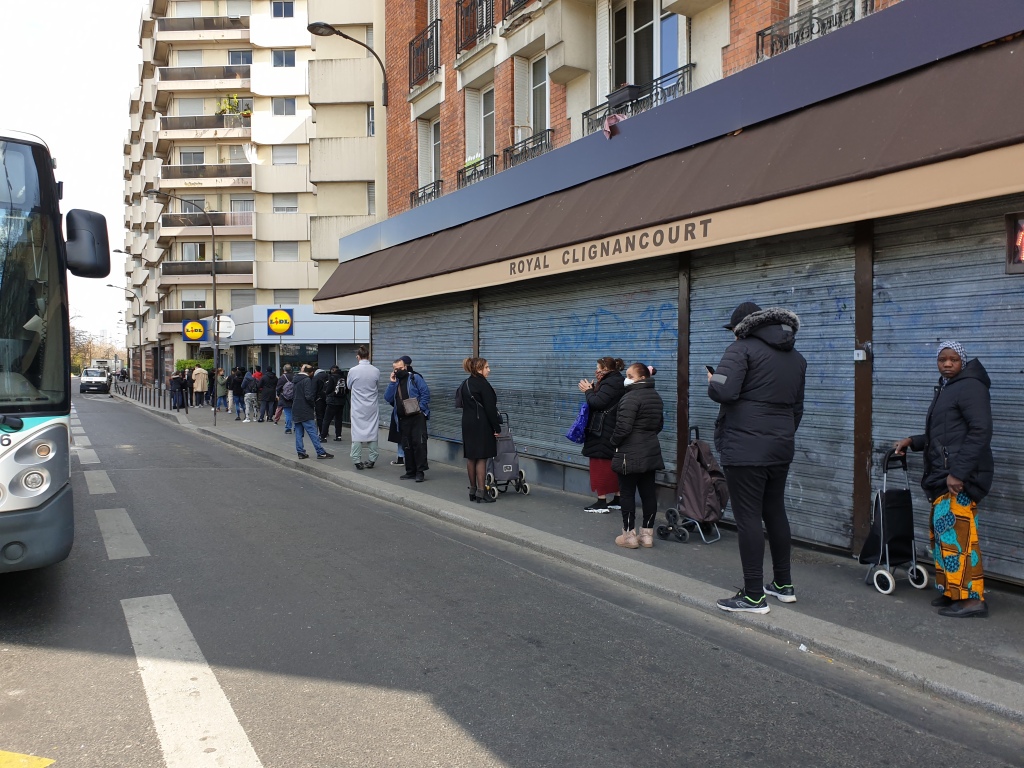
The Dejean market street, however, was almost entirely closed up. The only action was in front of the one grocery store on the street, and it wasn’t good. The store was trying to close. It had shut off the entrance. But potential customers were clustered around the exit, trying to get in and arguing with the security guards. The guards explained that because of the new rules, the store was only open from 8a.m. to 10a.m. and from 2p.m. until 4p.m. (doesn’t that mean the stores are MORE crowded rather than less?). It was 4:10, and no one was getting in.

“So we came here for nothing!” an angry woman exclaimed. Just then, a couple of cops rounded the corner and walked down the street. They studiously avoided looking at the store and the non-distancing crowd around it (and I studiously avoided taking a photo of them). As far as I could tell, the standoff continued as I walked away.
Around the corner, a sign on a butcher made clear that the new opening hours were for everyone, not just the grocery.
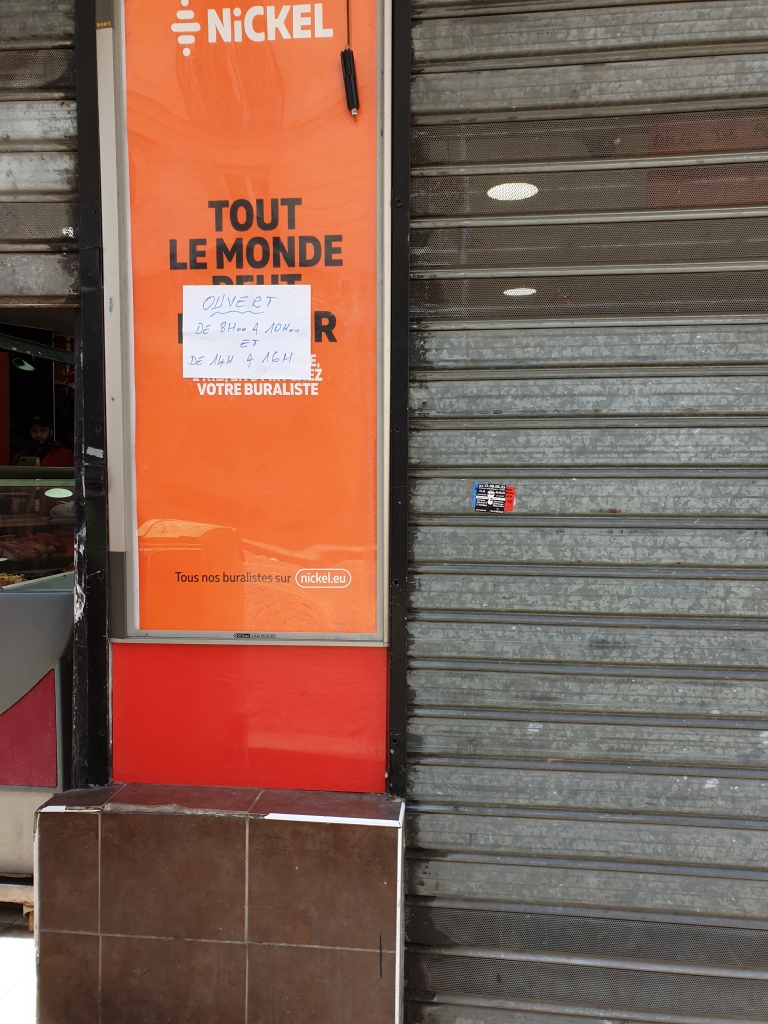
The funny thing is, the grocery-store customers could have walked to any of the five supermarkets I had passed along the way, which seemed to be open all day. Granted, there were lines, even in some cases curving around the corner.
I headed back toward the tram stop, taking a detour to avoid a line of cops checking papers on the boulevard Barbès. One of my attestations said I was working (“For whom, Madame?” I could imagine the cops asking.). The other said I was engaging in physical exercise (“Four kilometers from home, Madame?”).
Some friends of ours just got stopped by the police while they were taking a walk, at least their papers said they were exercising. Unfortunately, they were also smoking.
They got off with a warning. I wondered how often that happened in the Goutte d’Or.
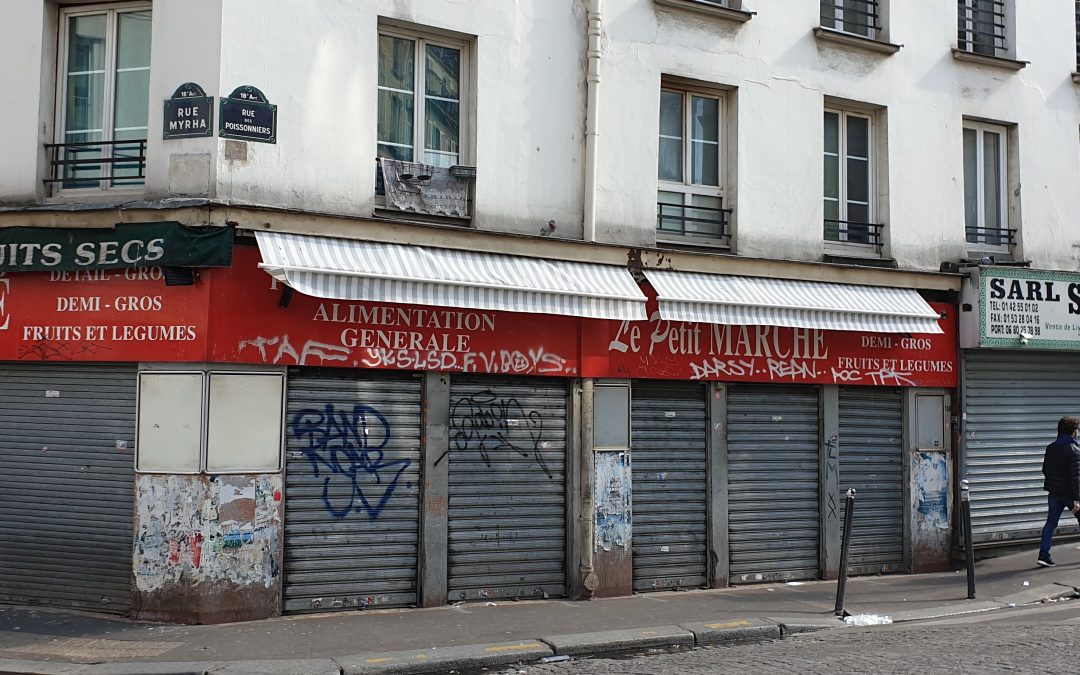
Trackbacks/Pingbacks